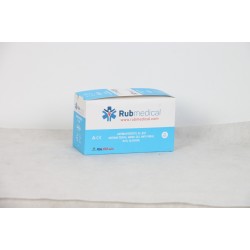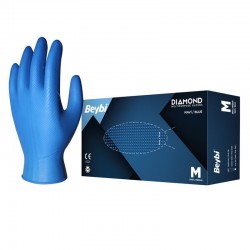
In a world increasingly concerned with hygiene and safety, nitrile gloves have emerged as a vital tool for various industries and individuals alike. Whether you're a healthcare professional, a laboratory technician, a tattoo artist, or simply someone who values personal protection, understanding the properties, uses, and advantages of nitrile gloves is crucial. In this comprehensive guide, we will delve deep into the world of nitrile gloves, exploring their composition, applications, and why they have become the preferred choice for many.
Introduction to Nitrile Gloves
Nitrile gloves, a type of disposable glove, have become ubiquitous in various fields due to their remarkable versatility and durability. These gloves are made from nitrile rubber, a synthetic material that offers several significant advantages over traditional latex gloves and vinyl gloves. To fully grasp the importance of nitrile gloves, let's delve into the details of their composition and manufacturing process.
Composition
Nitrile gloves are primarily composed of acrylonitrile-butadiene rubber (NBR), a synthetic polymer that exhibits excellent resistance to a wide range of chemicals, oils, and solvents. The key components of NBR are acrylonitrile and butadiene, which are blended together to create a material with unique properties.
Acrylonitrile: This component provides nitrile gloves with their resistance to chemicals and oils. The higher the acrylonitrile content, the greater the glove's chemical resistance. Acrylonitrile also contributes to the gloves' strength and flexibility.
Butadiene: Butadiene enhances the elasticity and flexibility of nitrile gloves, making them comfortable to wear and easy to put on and take off.
Fillers and Additives: Manufacturers may incorporate various fillers and additives to improve the glove's physical properties, such as strength, grip, and texture.
Manufacturing Process
The manufacturing process of nitrile gloves involves several steps:
Raw Material Preparation: Acrylonitrile and butadiene are mixed with fillers and additives to create a nitrile compound.
Compounding: The nitrile compound is processed through compounding machines to ensure uniformity and consistency.
Dipping: The compounded nitrile is then dipped onto glove molds, creating a thin layer of material that forms the glove.
Vulcanization: The dipped gloves are vulcanized, a process where they are heated to improve their strength and durability.
Quality Control: The gloves undergo rigorous quality control checks to ensure they meet industry standards for strength, thickness, and impermeability.
Properties of Nitrile Gloves
Understanding the properties of nitrile gloves is crucial in determining their suitability for various applications. Here are the key properties that make nitrile gloves stand out:
1. Chemical Resistance
One of the most significant advantages of nitrile gloves is their exceptional resistance to a wide range of chemicals, including acids, bases, oils, and solvents. This property makes them an ideal choice for industries where exposure to hazardous substances is common, such as laboratories, chemical manufacturing, and healthcare.
2. Allergen-Free
Unlike latex gloves, which can cause allergic reactions in some individuals, nitrile gloves are latex-free, making them suitable for people with latex allergies. This feature has contributed to their widespread adoption in healthcare settings.
















